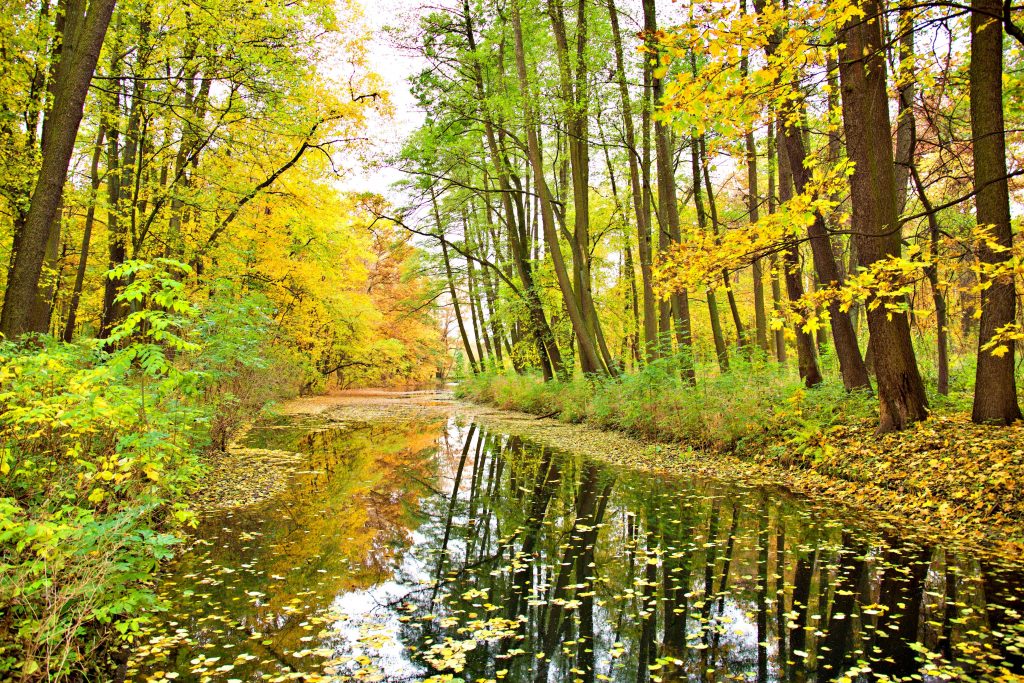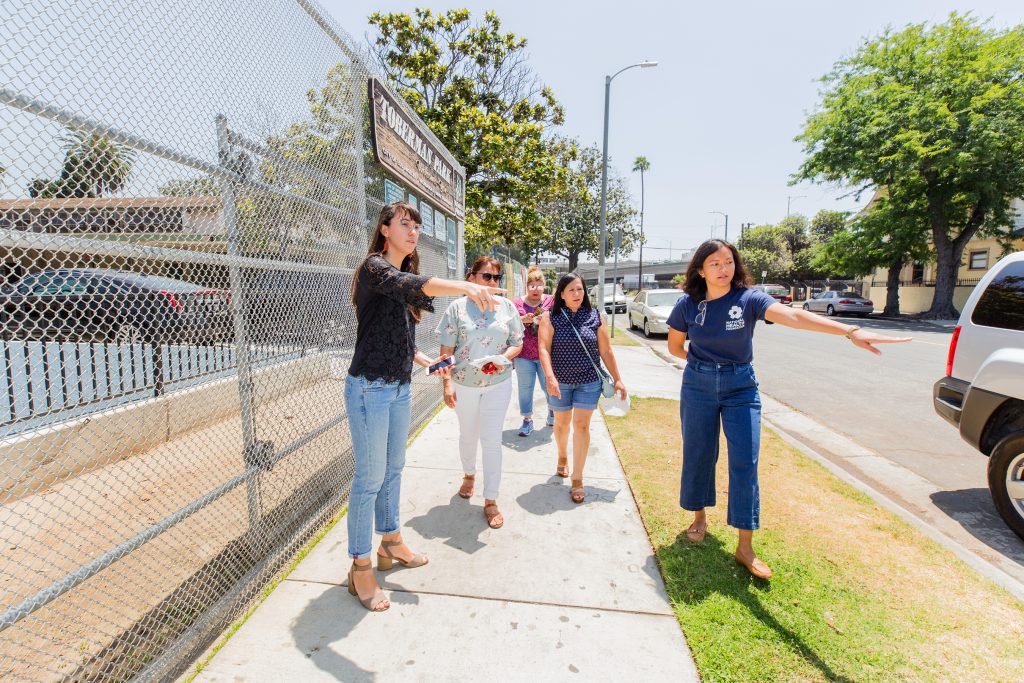Within the last several years there has been growing momentum to address park equity and the lack of green space in under-resourced communities that are largely inhabited by Black, Indigenous, People of Color (BIPOC). This year in particular, taught us how deeply entrenched health disparities are in BIPOC communities and how access to green space is pivotal to health. However, the challenges of 2020, more specifically, the COVID-19 pandemic, have created new opportunities for change – from the implementation of new policies to the re-allocation of funding for parks and recreation. The labor of grassroots organizers and community groups in the fight for park equity will come to fruition in 2021 as increased government funding becomes available and the launch of new projects are slated to commence.
Measure A & the Formation of the Park Equity Alliance
In the Spring of 2016, a myriad of environmental justice-centered measures and policies were passed by the Los Angeles County Board of Supervisors and later approved by Los Angeles County voters . The funding from these measures have now been made available and community groups are working to make sure adequate funding is allocated to historically disinvested neighborhoods. Measure A, the “Safe, Clean Neighborhood Park, Open Space, Beaches, River Protection, and Water Conservation” Measure, ensures that parks, open spaces, beaches, and waterways are built, maintained, and improved for future generations. The passing of this measure means that an annual parcel tax funding of $98.6 million dollars will aid parks and open spaces across the county. Since much of the funding from Proposition A, the “Safe Neighborhood Parks Proposition”, was ending in 2019, Measure A was created in order to revitalize the deteriorating parks and recreation system.
Unlike Proposition A, Measure A was passed by the Board of Supervisors in hopes that the funding would target the most park-poor areas in Los Angeles County based on the Park Needs Assessment. Fortunately, community coalitions like the Park Equity Alliance (PEA), are dedicated to holding the Regional Parks and Open Space District (RPOSD), along with other elected officials, accountable in terms of equitable Measure A funding disbursement. As National Health Foundation’s Undergraduate Health Equity Fellow, I have assumed a role as a member of PEA on behalf of NHF, which has allowed me to further my involvement in spatial justice advocacy. PEA, which is made up of grassroot organizations, nonprofits, and advocacy groups, was formed during the Measure A Implementation Steering Committee process. PEA calls for strong oversight on Measure A implementation, robust community engagement, and transparent processes on behalf of public agencies to achieve an equitable distribution of park resources. Due to the efforts of PEA and others, Measure A funding is one of the first steps to addressing the historical disinvestment of low-income, BIPOC communities.
The Built Environment and Measure W
Measure W, the “Los Angeles Region, Safe, Clean Water Program,” was passed right alongside Measure A during the November 2016 election process. This Safe and Clean Water Program would reduce the level of pollutants harming under-resourced communities in LA County by protecting residents from contaminated stormwater. Revamping stormwater capture sites and street drainage are priorities on this measure. Additionally, this program would mean that green spaces would be added in parts of the city that will be most endangered and face the most heat due to global warming and climate change. Green spaces, tree canopies, and open lands are known to have a cooling effect within their surrounding areas. As a result, dense inner-city communities with very little park access and green space are at most risk for the devastating effects of global warming, making Measure W one of the most vital policies passed in the county in recent years. Like Measure A, the funding and projects amended to this measure will be coming to fruition in the 2021.

Proposition 68
California voters approved Proposition 68, the “Parks, Environment, and Water Bond” in June of 2018 and within the coming months, we will start to see the positive effects of this legislation. Close to $400 million of Prop 68’s grant money will be available in early 2021. The Parks, Environment and Water Bond is a statewide policy that officially sanctions $4 billion dollars in general bonds to be granted to state and local parks, environmental protection and restoration projects, water infrastructure and food protection. Proposition 68 will be allocating around $725 million dollars to park poor areas. Funding allocated through Prop 68 will establish accessible parks and clean drinking water by preserving rivers, lakes, and streams in cities throughout California. Funding will also go towards ensuring California’s natural resources are protected from natural disasters like forest fires and earthquakes which are not only more common in the Golden State but also growing in risk and severity through climate change. Investing in our state’s open lands and natural reserves brings us closer towards a healthier and more sustainable environment for all.
National Park Services
There have also been great wins for national parks and public lands this year! The “Great American Outdoors Act” was made public law in August of 2020, a landmark accomplishment in the environmental conservation and protection movement. This bill establishes the National Parks and Public Land Legacy Restoration Fund to support deferred maintenance projects on federal lands. There is a vast amount of maintenance and beautification backlog in the National Parks and Recreation system resulting from a lack of funding. But that will all change with the Great Outdoors Act. Revenues from energy, oil, and gas infrastructures will be used to fund the Land and Water Conservation Fund, bringing in around $900 million dollars annually for national parks and open public lands across the country.

Photo Credit: Genesis Productions
Parks and Public Safety
This summer’s rise in global protests for the Black Lives Matter movement brought many elected officials to the realization that an anti-racist framework must be applied to all facets of our society to protect the lives of individuals who have historically been denied protection. Over the course of the year the world witnessed shocking displays of police brutality and injustice that are certainly not uncommon or new experiences faced by BIPOC communities worldwide. People marched, rallied, and protested in the streets for a world in which all bodies have the right to life and to access spaces regardless of race. Equitable safety initiatives in our public park systems play a pivotal role in ensuring these green spaces and recreation centers are accessible to all. This November, the Los Angeles County Board of Supervisors made a 3-2 decision to reevaluate the role of policing in public parks in Los Angeles County. This motion was made under the belief that the Los Angeles County park system has an over reliant and dependent relationship on law enforcement in community parks, which has proven to be an ineffective method of keeping Angelenos safe. The Board has made a commitment to discuss alternative measures to park safety in the foreseeable future.
The Fight for Park Equity Continues
During the recent 2020 election, voters approved $3.7 billion in new funding for parks and open space measures nationwide. In cities across the nation, measures were passed that advance the cause for environmental justice and conservation. With all the groundbreaking policy changes that will soon come and revitalize our park systems, it is important to note that this is only the beginning. For instance, Communities for a Better Environment (CBE) and Pacoima Beautiful, two organizations who are a part of the Park Equity Alliance, have for the better half of this year been fighting against detrimental pollutants in their communities. Pacoima Beautiful’s Policy Director, Andres Ramirez, has worked tirelessly to shut down a power plant that has been leaking methane gas for the last three years into Sun Valley and Pacoima, a predominantly low-income community that already suffers from poor air quality. Similarly, Communities for a Better Environment (CBE) is aiming to hold the Exide corporation accountable in cleaning up a toxic waste site they left after operating a lead acid battery recycler in the city of Vernon. For over thirty years the Exide Recycler has been contaminating Vernon and after a long and arduous legal battle between CBE, other community organizations and advocates, Exide won. Due to a failure of funding, agency oversight, and a culture of intolerance Exide was let off the hook for a cleanup that is estimated to cost around $100 million dollars. Holding large corporations and companies that continue to bring harm onto the most vulnerable communities is a large part of reimagining Los Angeles’ future. If we cannot do this, we cannot achieve a sustainable, healthy future for all individuals. Thanks to BIPOC community activists and grassroot organizers, our future is moving further along in the fight for park equity and access for all communities. To ensure we all have access to the clean, green and healthy future we each deserve, we have to be a catalyst for change by campaigning, organizing, voting, and supporting policies and people that drive park equity forward.
Author Bio:
Naomi Humphrey is an alumna of National Health Foundation’s BUILD Health Initiative at Thomas Jefferson Senior High. She is currently an undergraduate student at UCLA, and continues to advocate for park equity and spatial justice for her home community as a member of Prevention Institute’s Powering Healthy Lives through Parks Community Advisory Board, and serving as NHF’s Health Equity Fellow. This article is the second of a series authored by Naomi exploring current issues regarding health equity and the built environment.
